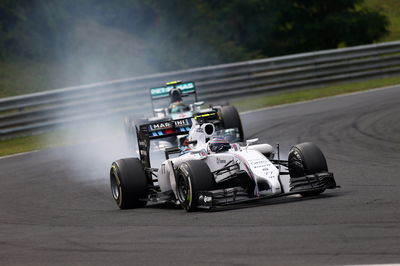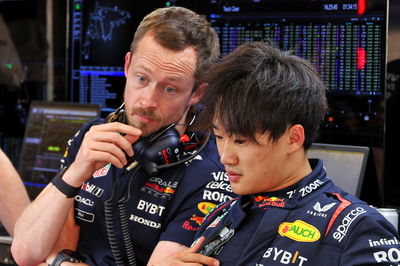Williams 'problem' was pace, not tactics - Smedley

Rob Smedley insists that Williams did not take its eye off the ball tactically at the Hungarian Grand Prix, despite questions being raised over its decision to fit the harder tyre at its second pit-stop.
Instead, the team's director of vehicle performance pointed to the FW36 not being entirely suited to the Hungaroring and being caught out by the significantly cooler temperatures of race for a result that saw Felipe Massa come home fifth and Valtteri Bottas eighth.
Bottas had qualified third fastest on Saturday, and vaulted straight into second spot by passing Sebastian Vettel around the outside of turn one on the opening lap, but was amongst the leading quartet that was already past pit entry when the first safety car came out, pitting a lap later than most and dropping him down the order as a result.
When a second safety car was called for to cover the clear-up of Sergio Perez's meeting with the pit-wall, Williams opted to fit the harder medium compound Pirelli to both its cars in the hope that they could go to the end of the race and gain an advantage over the majority, who had opted for the soft rubber, but the move didn't quite come off.
"I don't think we dropped the ball," Smedley insisted in response to questions about the strategy, "Absolutely, without a doubt, the main problem was the pace of the car.
"We've come out of the last four events where we had the second quickest car but, as I have often said, it can swap from being the second quickest car to the fifth quickest car quite easily. I think [on Saturday], in the hotter track temperatures, we went alright, and [on race day] the track cooled down by 18-20 degrees and we couldn't get any pace out of the car. We need to go away and understand our tyre management in these conditions, on this type of asphalt surface, micro/macro roughness, these compounds, these working ranges and how we ran the car in today's conditions to see where we can do it better next time.
"Certainly, we didn't do a great job today, that's absolutely clear, but I don't think that what we tried to execute during the race was fundamentally flawed - we got both cars home in the points, but it just didn't work out for us. From the outset, we were on the back foot with the pace, going backwards compared to the Red Bull and the Ferrari...."
Admitting that the team could have set its cars up a little differently for the conditions, primarily in order to generate more tyre temperature, Smedley also conceded that Williams still needed - and was continuing - to sharpen its operations, but was getting better with each race. The decision to fit the medium tyre mid-race, he insists, was based on legitimate data.
"We expected other people to pit [under the second safety car], but only [Daniel] Ricciardo did and he fitted options," Smedley added, "We fitted primes because we believed that, from there, the option wouldn't be able to make it to the end of the race with just one more stop. From everything that we saw on Friday and everything in the data we took from other teams, we expected 16 laps from the option tyre, but I think the difference was, in these conditions, you could get that tyre working and therefore sliding around a little less, which extended the life of it massively.
"You can look back in hindsight and say that was the case and, at lap 21 of the race or whatever it was when the second safety car came out, we didn't think we could do 25 laps on [each set of] option tyres. As it transpired, you could actually do much more than that..."
While Massa was able to move up from his sixth grid slot over the course of the 70 laps, Bottas was always fighting back from his first stop, and found himself once again battling Vettel heading into the closing stages.
"We knew that if we pitted Valtteri [with 17-18 laps to go], he would come out ninth and you kind of set yourself in stone for ninth," Smedley reasoned, "He was running along in fifth position, with tyres in little bit worse condition than Felipe, and it was just a case that Sebastian was ten seconds behind with three-tenths a lap [in hand]. So he would have caught us towards the end of the race, but he didn't have enough pace [to pass] and, while we were sat there in that kind of lap time, we took the decision 'can the tyres make it?'.
"The telemetry was saying probably not, but you were going to miss it by five laps, so you may as well go for it at that point. When it became apparent that we'd hit the cliff with those tyres then, obviously, we had to bail out and fit the option. Valtteri went for it and got onto the back of Sebastian at the end, but just couldn't get past."











